Get PeakVisor App
Sign In
Search by GPS coordinates
- Latitude
- ° ' ''
- Longitude
- ° ' ''
- Units of Length

Yes
Cancel
Share ×

Scan the QR code and open PeakVisor on your phone
❤ Wishlist ×
Choose
Delete
Triglav National Park is a protected area that’s located in northwestern Slovenia. It is the country's largest protected area and its only national park. The park encompasses many different landscapes and most of the spectacular Julian Alps. There are 664 named mountains in the park, the highest and most prominent of which is the famous Triglav (2,864 m/ 9,339 ft).
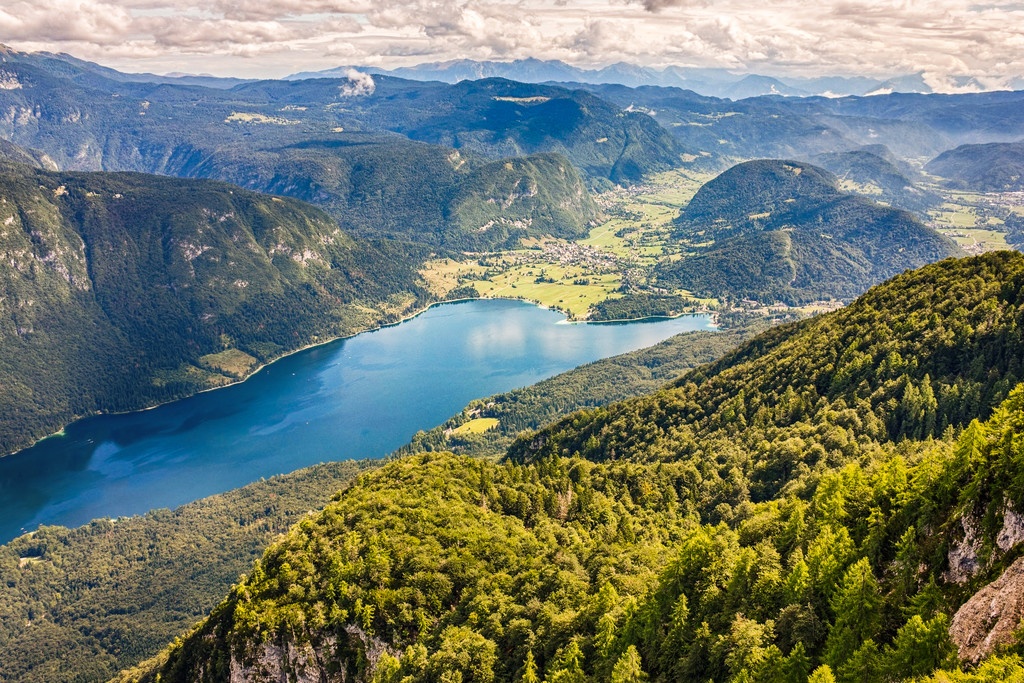
Slovenia is a small country, but it has a lot to offer when it comes to mountainous terrain. Triglav National Park (Triglavski Narodni Park) is one of the most popular spots in the country for outdoor enthusiasts. Situated in the northwestern part of Slovenia, Triglav encompasses a small section of the Alps, and it is bordered by Italy and Austria to the west and north.
Triglav National Park contains about 4 percent of the total territory in Slovenia. It's an iconic national park that covers an area of around 840 sq. km. (521 sq. mi). Triglav National Park is one of the oldest parks in Europe as it was initially founded as a conservation area in 1924.
The park offers an amazing variety of landscapes since the elevation difference between the lowest and highest points in Triglav is more than 2,500 m (8,200 ft). In fact, the lowest elevation in the park is the Tolmin Gorge, which is located at around 180 m (590 ft) above sea level.

Meanwhile, the highest peak in the park is Triglav, which has an elevation of 2,864 m (9,339 ft). Many see it as a kind of holy mountain since Slovenians don’t believe one is genuinely a Slovenian until they climb the peak.
The alpine region of the park provides magnificent views of the valleys, verdant hills, lakes, and small brooks of northwestern Slovenia. The Soca and Sava rivers originate from the glaciers that are located on the slopes of Triglav. There are also a number of large glacial lakes in the park, too, such as Triglav Lake, Lake Krn, and the Lower and Upper Kriz Lakes, the latter of which are among the biggest lakes in Slovenia.
Most of the things that you can do in Triglav as a visitor are outdoorsy, so it’s a good place for active holidays. The weather in the park is usually similar to that of the valleys. However, be sure to pack enough warm clothing when heading up into the mountains in the park, as weather conditions in the region can quickly change.
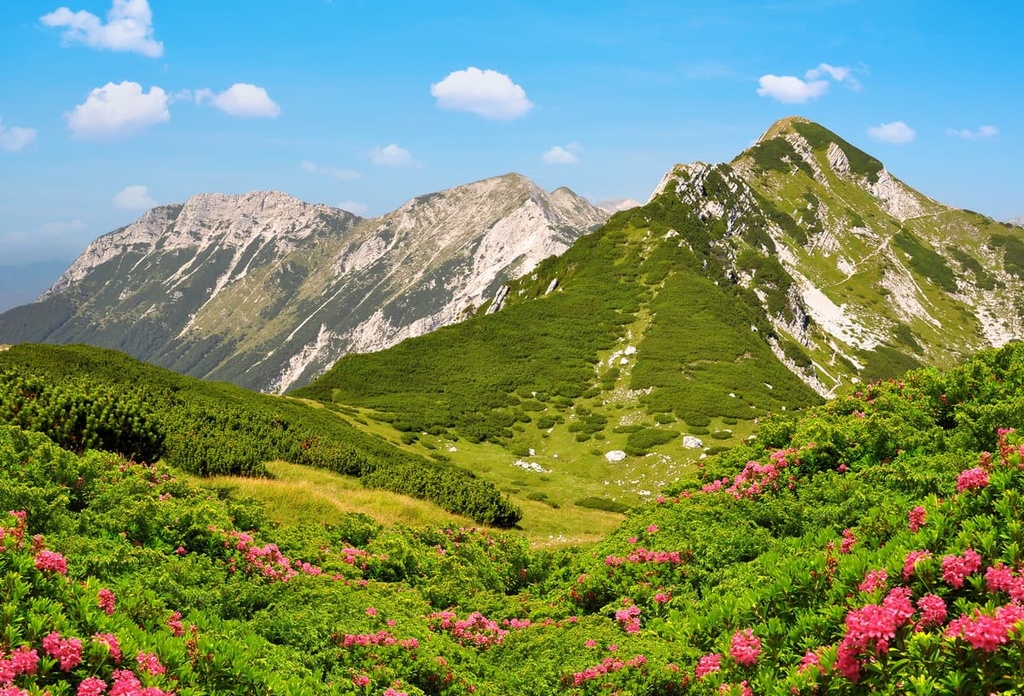
This park is surprisingly large, which is evident from the sheer number of things that you can do within its borders. Therefore, it’s best to spend at least three days in Triglav if you want to experience all that it has to offer. Some of the best places to visit in the park include:
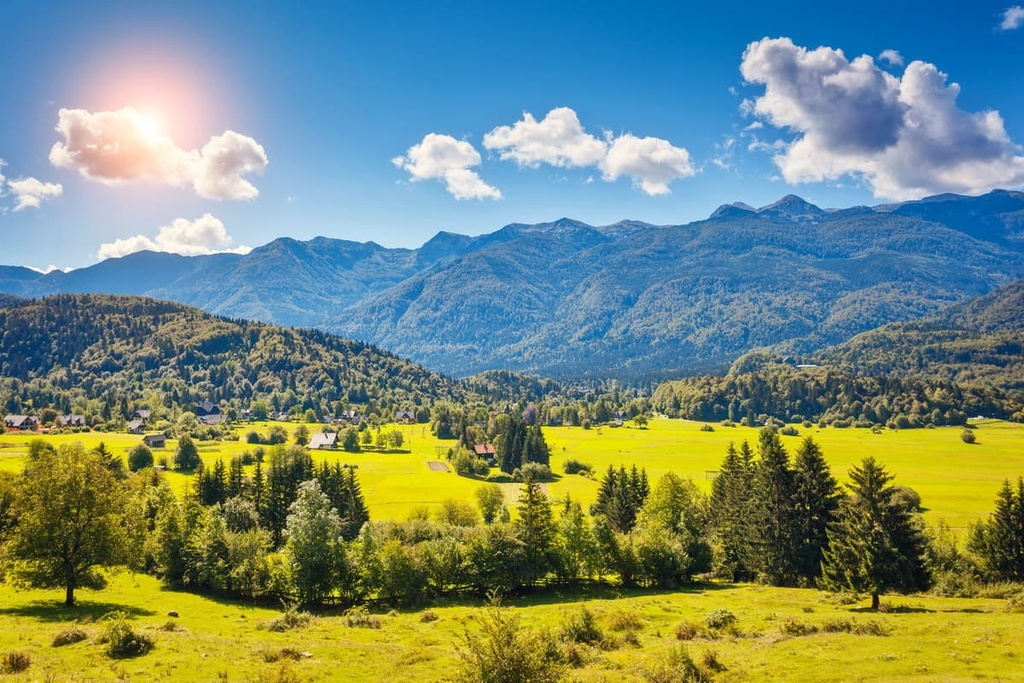
Triglav National Park is home to some of the easternmost peaks of the Alps, namely the Julian Alps and Prealps. The mountainous landscape in the park consists of limestone, as is the case with much of the rest of the eastern part of the Alps, particularly in neighboring Italy.
The Alps arose as a result of the collision between the Eurasian and African tectonic plates. During this collision, rocks were pushed upward and folded over one another. The forces of erosion then crafted these rocks into the landscape that we see in the region to this day.
Due to the fact that the main rock type in the Julian Alps (and in Triglav National Park) is limestone, the park is home to both karst formations and a sizable number of fossils.
The park’s karst formations are most noticeable at higher elevations where vegetation is scarce. Karst topography occurs when water-soluble rocks, like limestone, are dissolved by water to form a network of subterranean features, like caves, sinkholes, and springs.
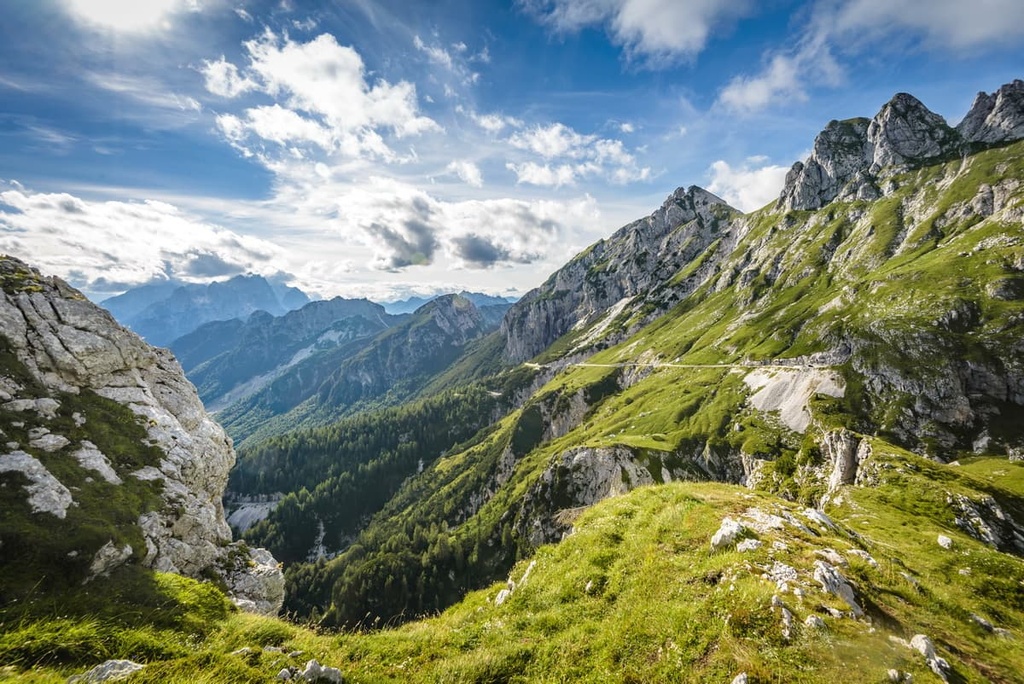
In particular, there are more than 250 springs in Triglav National Park. The park is also home to Slovenia's largest natural lake, as well as rivers, streams, and wetlands.
The mountains of Triglav National Park actually produce the drinking water that supports much of the western part of the country. In fact, both the Soča and Sava rivers originate in Triglav National Park. The Soča eventually flows into the Adriatic Sea while the Sava drains into the Black Sea.
In addition to the park’s many waterways, Triglav is also home to a number of notable peaks. Some of the highest peaks in the park include:

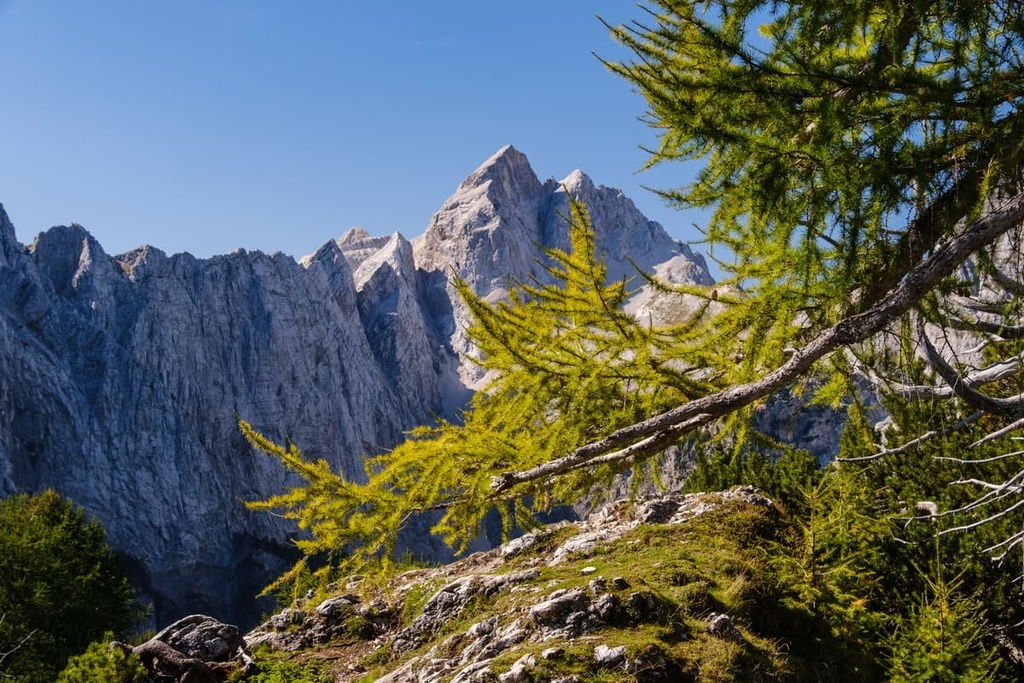

Triglav National Park is home to a variety of terrain and ecosystems, including forests, aquatic habitats, and even glaciers. You can find all kinds of landscapes in the park, including ponds, lakes, bogs, and towering peaks.

This diversity of terrain is thanks, in part, to the park’s wide range of elevations. Additionally, the park is located along the edge of both the Mediterranean and continental climate zones, so you can find a blend of habitats and ecosystems within its borders.
Approximately two-thirds of the park is home to forests. In these forests, the primary tree species are beech, pine, spruce, and larch. Other species that you can sometimes find in the park include hop hornbeam and dwarf ash. These forests grow everywhere from valley floors and steep slopes to high-elevation plateaus.
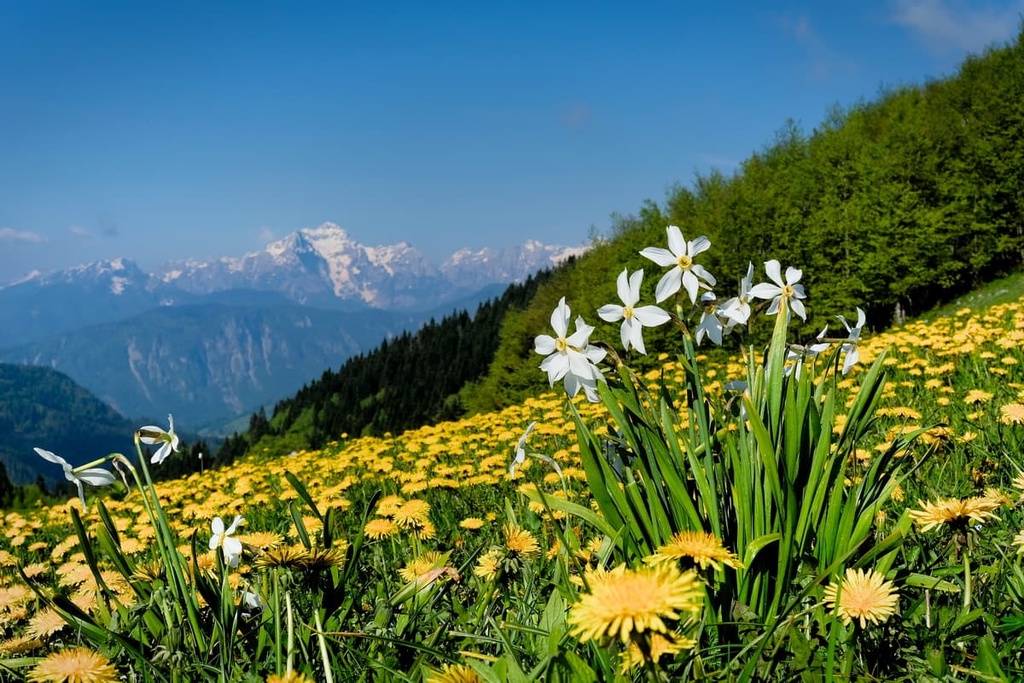
Some of these forests are particularly old, too. In fact, the largest larch tree in the park has a circumference of 4.2 m (13 ft) and is estimated to be 1,050 years old!
The treeline on the Soča side of the park starts at around 1,600 m (5,249 ft) in elevation. The highest-reaching species in this part of the park is beech, which does well in areas with cloudy weather and a lot of precipitation.
On the Pokljuka Plateau, there is a remarkable ecosystem known as a peat bog. Peat bogs are areas of stagnant water that are covered with a layer of peat. The process of bog creation dates back to the last glacial period. Peat is effectively an accumulation of partially decayed organic matter and it is one of the best carbon sinks on the planet.
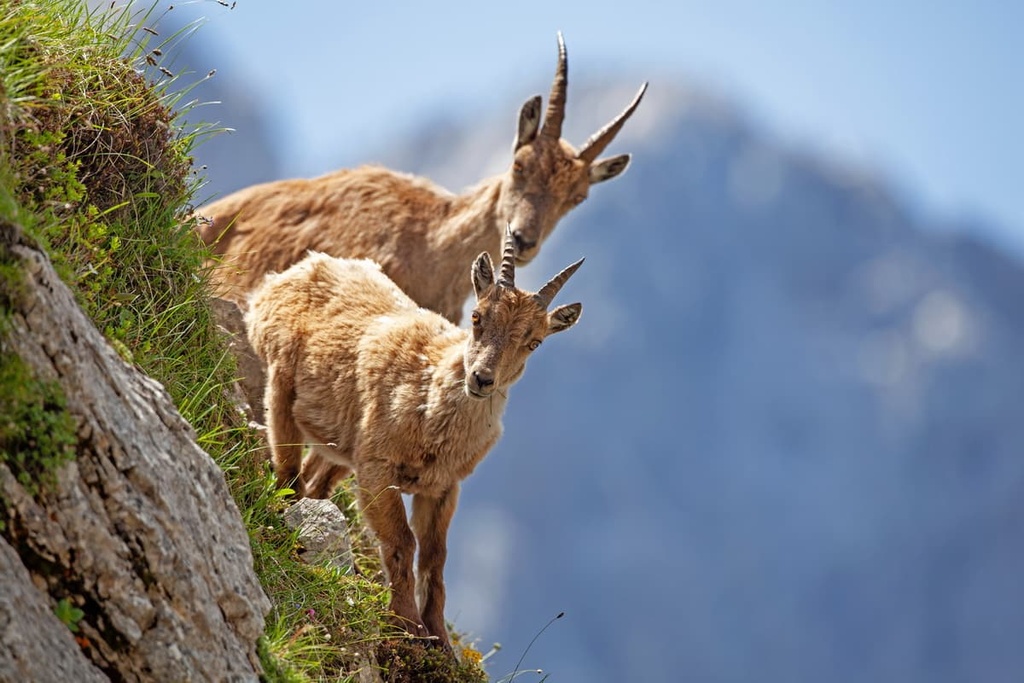
Within the park’s alpine meadows, you can also find a number of incredible wildflowers. Some of the more notable wildflowers that live in the park include various gentians as well as beaked lousewort (Pedicularis rostratocapitata) and edelweiss (Leontopodium alpinum).
Humans have lived in the area that is now Triglav National Park for thousands of years. The earliest evidence of human habitation in the region is a collection of artifacts found in Lepa Koma and Vogel that dates back approximately 3,600 years. You can actually see some of these archaeological sites by hiking on a trail called the Železna pot (Iron Route).
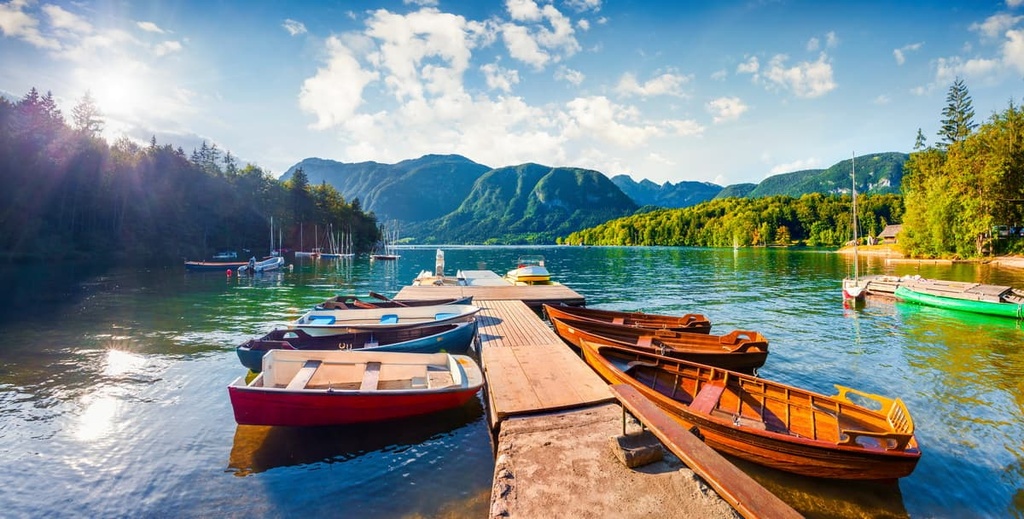
Some of the earliest residents of the region were the Celtic tribes who settled in the lowlands of modern-day Slovenia. Soon afterward, the Roman Empire conquered the region, which brought about economic growth in the area.
During this time, local residents created pastures and mines throughout the Julian Alps. Many of the mines sought to extract the mountains’ high-quality iron ore deposits, which were valuable for the creation of weapons, tools, and other goods. One of the largest and most famous iron-working centers in the area during this time was Bohinj.
In addition to mining, the local economy was also driven by farming as many of the local residents logged the region’s forests to create pastures. There were also a number of important fortifications in the region, which were likely created to protect residents from invaders.
Many of the settlements in the region were farming communities, or celki, which means they consisted mainly of isolated farms (or homesteads) that were located away from major transport routes. These settlements were very remote, so they preserved local traditions for a long time without outside influence.

As a result, the area of Triglav National Park has its own unique cultural heritage. The residents of the region have their own oral traditions, folk literature, and customs. There are two particularly important local cultural traditions in the Bohinj area: the New Year tradition of caroling (called otepanje) and the long-running tradition of making a cheese known as mohant.
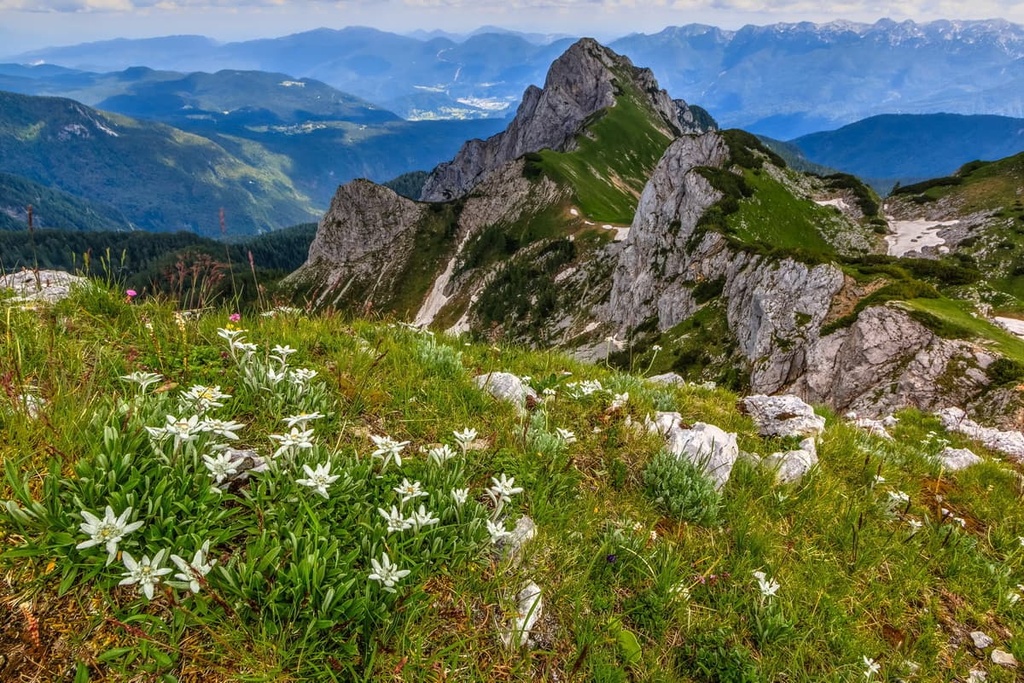
Four Slovenian climbers, Luka Korosec, Matija Kos, Stefan Rozic, and Lovrenc Willomitzer, made the first ascent of Triglav (2,864 m/ 9,339 ft) in August 1778. They climbed the peak by traveling from Bohinj Lake to Velo Polje (near the modern-day Vodnikov Dom hut) and over Planika (near the modern-day Planika Hut) to the summit.
The origin of Triglav's name is still a mystery. Some people believe the mountain’s name comes from the fact that it looks like it has three peaks when you view it from the south. From the south, you can see the main summit, Rjavec peak, and Mali Triglav, the latter of which is actually just a shoulder, not a real peak.
It’s possible that the name Triglav comes from the translation of the phrase ‘three heads,’ or tri glave. The three ‘heads’ in the name would be a reference to the three peaks of Triglav, though this etymology is contested.
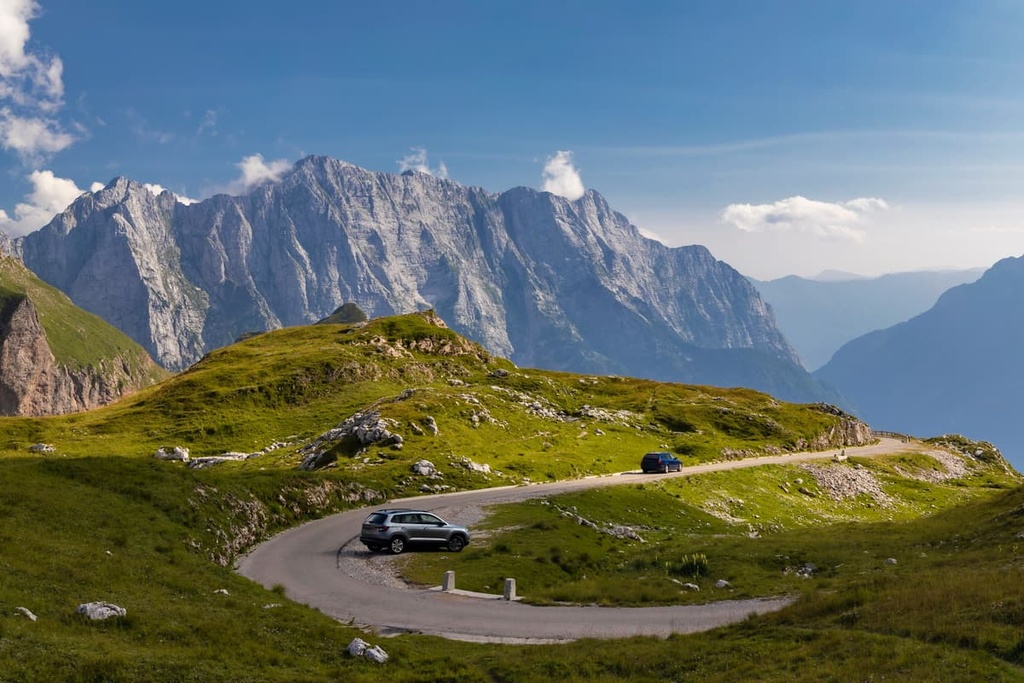
In 1908, Albin Belar, a Slovenian naturalist, proposed that the government protect the Julian Alps of Slovenia by establishing a park. However, it wasn’t until 1924 that the area was formally protected under a newly created “Alpine conservation zone.” The national park itself was officially established in 1961, and it was designated as part of a UNESCO biosphere reserve in 2003.
Nowadays, Triglav (2,864 m/ 9,339 ft) is not just a mountain. As the famous Slovenian writer and mountaineer Julius Kugy wrote in his book after the First World War, “Triglav is not a mountain, Triglav is a kingdom.”
Indeed, Triglav is a national symbol for Slovenia and it is a point of pride for the country. It is even depicted on Slovenia’s coat of arms. The former president of Slovenia, Mila Kučan, also once stated that every Slovene has a national duty to climb Triglav at least once in their lifetime.
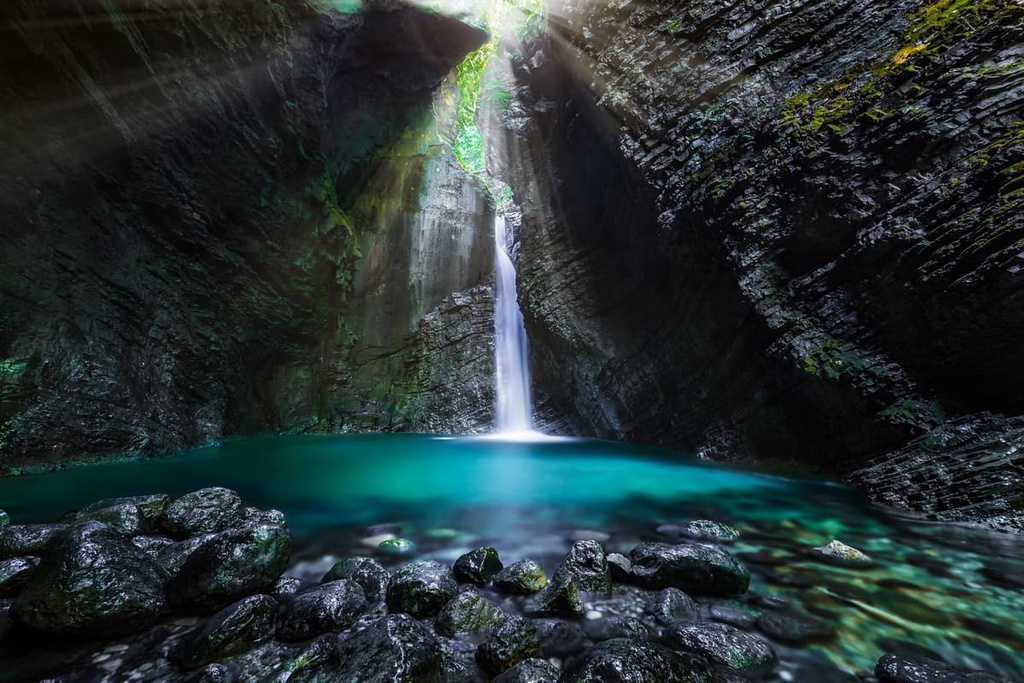
Triglav National Park has so much to offer for visitors, including opportunities for climbing, hiking, cycling, and watersports. Here are some of the best hikes in the park to check out during your next trip to Triglav.
The Soča Trail is a relatively new route that connects the sources of the Soča River with Bovec, providing visitors with an outdoor journey through Slovenia's finest mountains and forests. The Soča Trail is 25 km (15.5 mi) long and it brings you deep into the wilderness areas of the park.
This trail starts at the source of the Soča River and it takes you to see a number of incredible destinations, including the Mlinarica Gorge, the Dr. Julius Kugy Monument, and the Alpine botanic garden at Juliana.
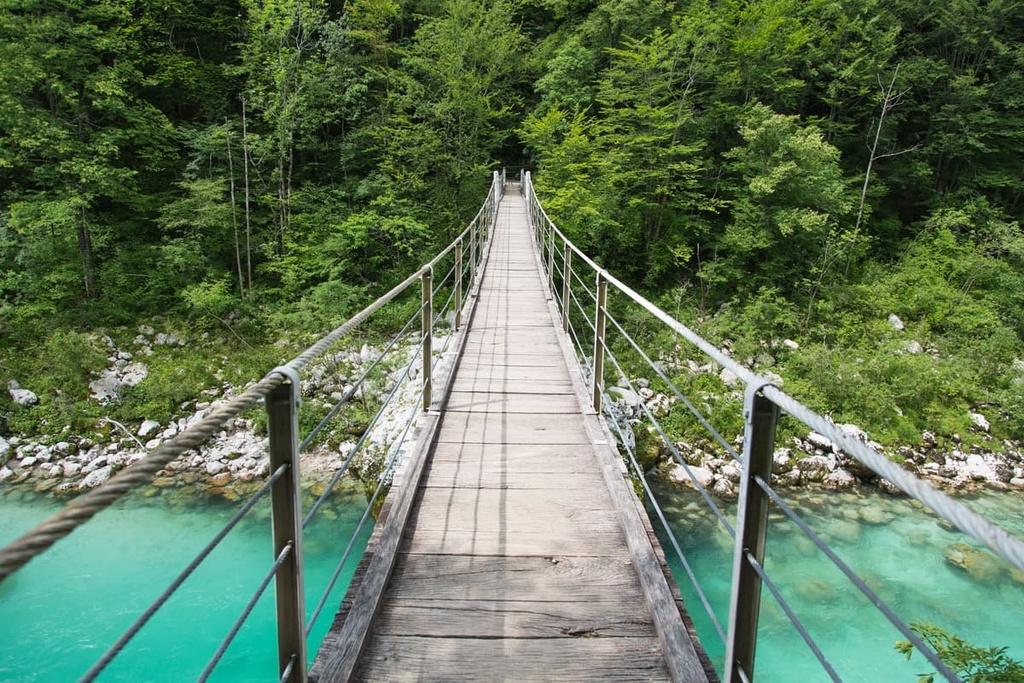
While it is possible to do this hike in a day, many people opt to complete it as an overnight trip. If you choose to do this trail as an overnight trip, you can either bring a tent to stay at one of the campgrounds that are located along the route or you can spend the night in one of the region’s many guesthouses.
The Tolmin Gorges are one of the most beautiful parts of Triglav National Park. The gorges are home to the lowest elevation point in the park and they boast some truly spectacular terrain. According to many locals, one of the caves in the gorges even inspired poet Dante Alighieri and his description of Hell in Inferno.
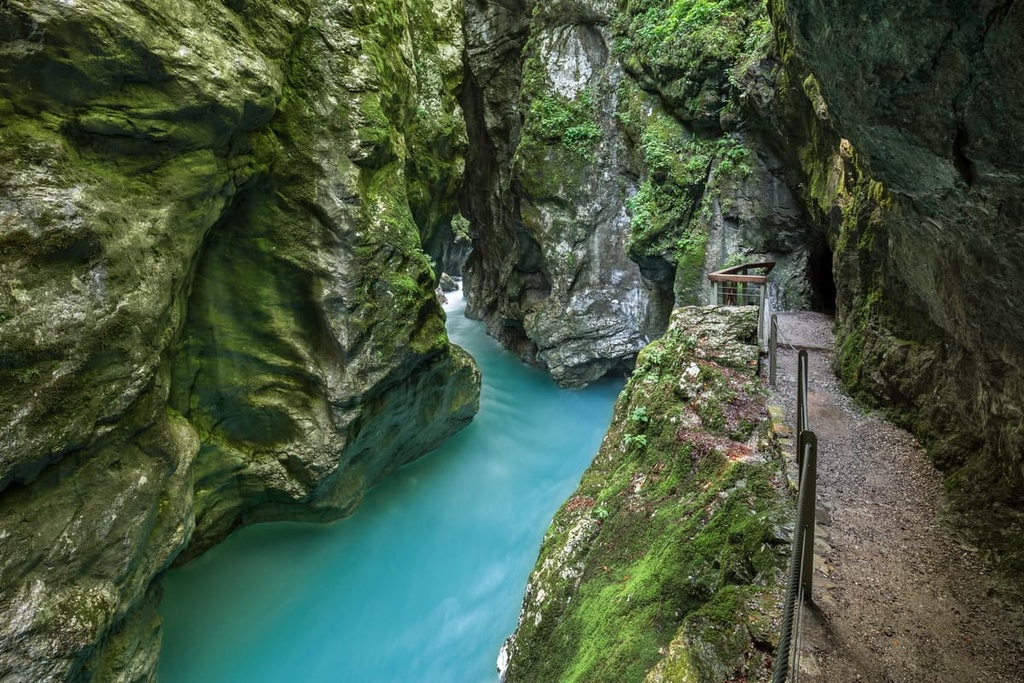
You can reach the gorges via a 4 km (2.5 mi) long trail that is very well-maintained and traveled. Keep in mind that there is a fee to park at the trailhead, but there is a free shuttle bus that leads to the trail, too, if you’d rather not drive.
The Goreljek Bog Nature Trail was constructed as part of an ambitious goal of boosting tourism in the region by drawing people to a completely new area in the park. The Goreljek Bog is located in a community that’s mostly home to holiday cottages and its namesake trail offers a unique chance to learn more about Slovenia’s peat bogs.
This short nature trail features informational boards that explain the different features of peat bogs. The trail itself is around 2.2 km (1.4 mi) long, so it’s a great option for a short hike in the park.
Summiting Triglav can be a major undertaking, though it all depends on which of the nearly 20 routes on the mountain you take during your journey. There are both technical and non-technical routes to the summit. However, it’s widely recognized that the routes starting in the Vrata and Zadnjica valleys are the most difficult ways to reach the top of the mountain.
Keep in mind that all summit attempts on Triglav require at least some sort of scrambling. The less-technical routes feature via ferrata, so they don’t require much climbing experience or equipment (though hiring a guide is still highly recommended). Some of the other more difficult routes have no pre-established via ferrata, so you will need to bring your own protective equipment.
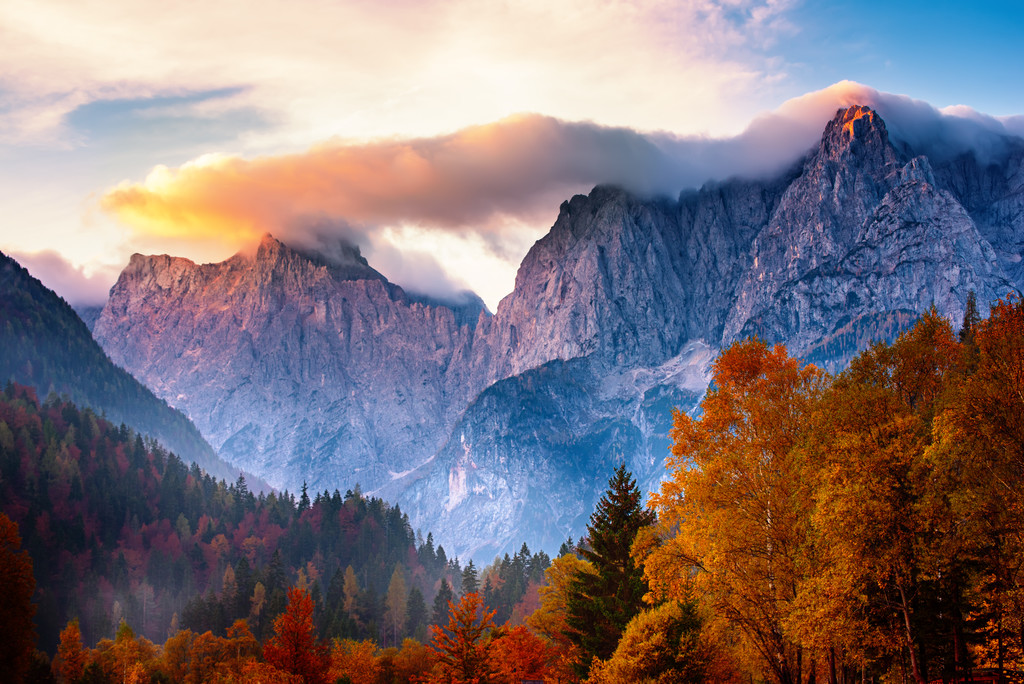
As a general rule on Triglav, the longer the route, the less technical it is. The shorter routes to the summit tend to be very steep and they often require sections of climbing without the support of via ferrata.
There are a few very popular routes to the summit, including via the 7 Triglav Lakes Valley. You can follow this route from Dolic via the Planika Hut to the summit. This route is generally regarded as being fairly easy and most people spend at least one or two nights at the hut during their trip.
However, there is always a possibility of bad weather on the mountain. If you are not a confident mountaineer, it's highly recommended that you hire a local guide for your summit attempt.

For skiing and snowboarding enthusiasts, there are more than 15 ski resorts in Triglav National Park, which are located throughout the park’s territory or close to its borders, but mainly in its southern part, where you will find most of the resorts, including also the largest of them. It is also one of the main areas for skiing in Slovenia and the Julian Alps and Prealps.
The largest ski resort in Triglav National Park is Kanin between Slovenia and Italy, including the Slovenian Bovec and the Italian Sella Nevea resorts with more than 30 km (19 mi) of slopes and more than 10 ski lifts in total in both areas.
Other major areas for skiing in and around Triglav National Park with more than 15 km (9 mi) of slopes and more than 10 ski lifts each include the following in descending order of size: Kobla, Vogel, Kranjska Gora, and Cerkno.
These are also the main ski resorts near Ljubljana, the largest city of the Triglav National Park, which is also the capital of Slovenia.
Check the Triglav ski resorts map on the larger Slovenia ski resorts map in the World Mountain Lifts section of the site. It includes information about open ski lifts / slopes in Triglav in real-time with opening dates and hours. There are also year-round cable cars, funiculars, cog railways, aerial tramways, and all other types of mountain lifts.
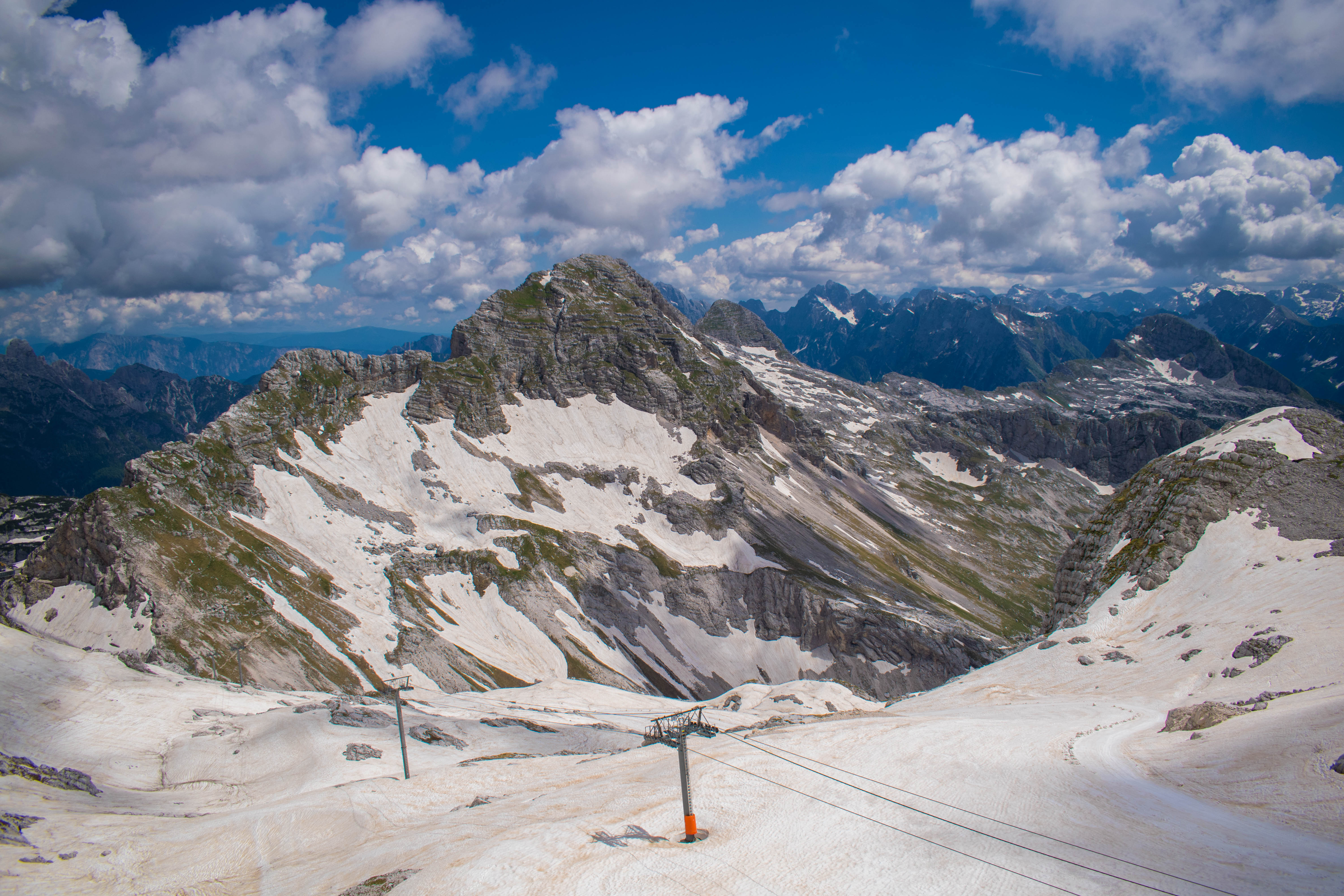
Looking for a place to stay near Triglav National Park? Here are some of the best cities and towns to check out during your next trip to the region.
Bovec is a small town of about 2,000 people that’s located in the Julian Alps near Slovenia’s border with Italy.
What makes this small town special is its proximity to the amazing Soča River and Triglav National Park. In fact, it is a very popular tourist destination, in part because it was a filming location for one of The Chronicles of Narnia films. There are also plenty of trails in the area around Bovec, too, so it’s a favorite destination among hikers in Slovenia.
Bovec is located just about 136 km (85 mi) from Ljubljana, so it’s relatively easy to get to if you’re coming to Slovenia from further afield. That said, you can only get to Bovec via road, so you will either need to rent a car or take a bus to get to the town during your travels.
Ljubljana is the capital and largest city of Slovenia. It lies in the Ljubljana Basin in central Slovenia at the foot of the Julian Alps.
The city of Ljubljana has a rich history dating back to Roman times. It was under Habsburg rule from 1527 until 1914 when it was occupied by Italy during World War I. It remained under Italian rule until after World War II.
Nowadays, Ljubljana is a multicultural city with beautiful architecture, so it’s well worth a visit if you’re in the area. As Ljubljana is home to the country’s largest airport, it’s also a starting point for most trips to Triglav and other areas in Slovenia.
Graz is the capital of Styria, a province in southeastern Austria. It is the third-largest city in Austria as it has a population of about 280,000 people. The city of Graz is located on the left bank of the Mur River, near its confluence with the smaller Glan River.
Although Graz is located in a different country, it is still relatively close to Triglav National Park. The drive between Graz and Bovec, for example, is just under 3 hours long, so the city is a good starting point if you’re traveling to Triglav from the north.
Graz itself is also a beautiful city in its own right, so it’s a superb destination for people who enjoy culture and nightlife. You can also get to Graz via air, rail, and road from other major destinations in Europe.
Explore Triglav National Park with the PeakVisor 3D Map and identify its summits.








